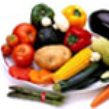|
Healthy Food for Green LivingHealthy food is a big part of green living. Just like we want to keep our planet healthy, we also want to keep ourselves healthy with a healthy diet of earth friendly foods.
Our Green Living food chain begins at the point of food production, and does not end until it has been transported to our home, prepared, and cleanup is complete. When we consider our healthy diet for our green lifestyle, we need to look at the entire chain - not just the food itself. The 4 steps of Healthy Food for Green Living are: -Sustainable production -Efficient transportation -Energy conserving preparation -Quick cleanup
And of course healthy food choices. Let's start with sustainable production. Sustainable is different from organic foods. Sustainable food production often includes organic practices, but also includes non organic practices where appropriate. Current agricultural technology is not yet at the point where we can feed the world entirely with organic practices - but we can with sustainable practices. Sustainable food is a way of raising food that is healthy for consumers and does not harm the environment. The easiest (and best) way to ensure you are using food produced this way is to grow your own. With home grown fruits and vegetables, you have complete control over the production methods, you are sure of your food safety, and there is nothing that can compare with the great taste of home grown food. American agriculture has come a long way in the past decade embracing sustainable practices. This is not necessarily the case in other countries. Your chances for purchasing sustainably grown food is much higher if you purchase food that is grown in America. Your local farmers market is another great source of food that is grown with sustainable practices. And finally, purchase fruits and vegetables that are in season. These are also much more likely to be produced with sustainable practices. Learn more about home grown fruit trees here. Food transportation can account for as much as 50% of the total natural resources used in the food cycle. This is as much as growing, preparing and cleanup combined - so it deserves careful consideration. Home grown is again the winner here - there is minimal resources used in transporting your fresh fruits and vegetables from the back yard to the kitchen! Purchasing foods that are in season also helps in a big way. It is much more efficient to transport domestically produced food than to bring food in from other countries. Local farmers markets can also be a good source of great food, but make sure you are using this trip instead of a supermarket trip - or you will be using more not less transportation resources. Energy conserving preparation saves you time and money while you conserve resources. Quick preparation meals, raw fruits, vegetables fresh from the garden that need no defrosting all help. The less time you spend in the kitchen with the stove and oven on the better for you, your money, and our environment. Look for quick recipes to prepare your healthy food, and use raw fruits and vegetables where possible. Finally, save and use your leftovers. You have already consumed the resources to produce and transport the food - all that is wasted when you throw food away. The final step is cleanup. Keep in mind that every extra pan and plate you clean uses additional water and energy resources. If you have ever been camping (the tent kind) where you had to haul in your own water you probably understand very well what preparation for easy cleanup means. If you keep cleanup in mind as you choose recipes and prepare the food you will save time, money, and precious resources as you are enjoying healthy food.
|

